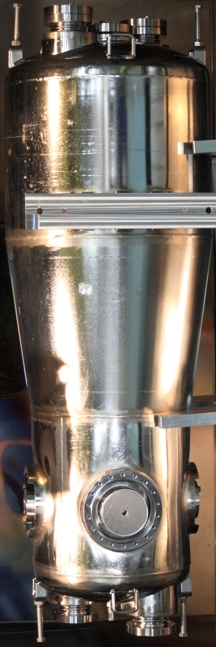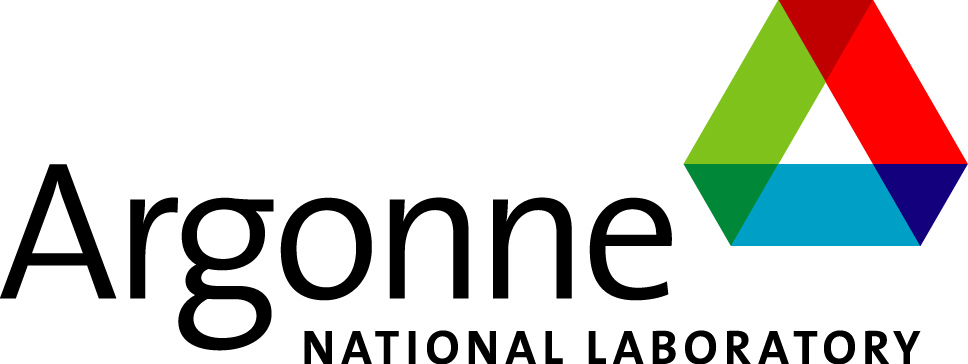|
|
The deadline for the receipt of contributions to the Proceedings of
HIAT 2012 is
Monday, June 18, 2012 Central
Standard Time (UTC/GMT-6)
Described below are some basic requirements for the preparation of
contributions. More complete guidelines are provided in the text of
our JACoW templates, downloadable from the table below.
JACoW Templates
| * |
Depending on browser being used,
Right-click and choose Save Link As...
(Firefox and Google), or Save target as...
(IE), or Download Linked File (Safari). |
All contributions should be uploaded via the Internet
according to the Electronic Submission instructions published on this
conference's web site. Authors are reminded that, since no
contributions are accepted for publication only, any paper
accepted for presentation, which is not presented by one of the
authors at the conference, will be excluded from the proceedings.
Furthermore, the Scientific Program Committee reserves the right to
refuse papers for publication that have not been properly presented in
the poster sessions. Manuscripts of contributions to the
proceedings (or enlargements of them) are not considered as posters,
and papers presented in this way will not be accepted for publication.
Manuscripts
Authors are advised to use the current JACoW templates
and read the instructions contained therein on their use. in case of
difficulties, they should consult the
JACoW electronic publication help pages. The templates contain
styles which, when applied, will automatically ensure correct
typesetting and layout. In the US Word templates, use the Styles and
Macros pull-down in the toolbar to apply the JACoW styles.
Authors are strongly advised to use the template
corresponding to the correct version of MS Word and not to transport
the document across different platforms e.g. Mac <-> PC or across
different versions of MS Word on the same platform.
Length of Contributions
Papers for invited oral, contributed oral and poster
presentations are requested to be no more than 7 pages long.
General Layout
See the JACoW templates for a typical implementation
of the requirements.
Manuscripts should be prepared for one side of the
paper and have either:
 |
US letter size (8.5 in x 11.0 in; 21.6 cm x 27.9 cm)
or A4 (8.27 in x 11.69 in; 21.0 cm x 29.7 cm) |
 |
Single-spaced text in two columns of 82.5 mm (3.25
in) with 5. 3 mm (0.2 in) separation. |
 |
The text located within the margins specified as
follows to facilitate electronic processing of the PDF or Postscript
file. |
The margins should be as follows:
|
Margins |
A4 paper |
US Letter paper |
|
Top |
37 mm (1.46 in) |
0.75 in (19 mm) |
|
Bottom |
19 mm (0.75 in) |
0.75 in (19 mm) |
|
Left |
20 mm (0.79 in) |
0.79 in (20 mm) |
|
Right |
20 mm (0.79 in) |
1.0 in (26 mm) |
Authors should use only Times or Times New Roman (in
roman, bold or italic) and Symbol fonts. All contributions should use
10 pt font size for the normal text.
Title
The title should use 14 pt bold uppercase letters
(except for terms such as GeV, mW, Nb, etc.) and be centered on the
page.
The names of the authors and their organization/affiliation and
mailing address should be listed alphabetically in 12 pt upper- and
lowercase letters, grouped by affiliation. When there is more than one
author, the submitting author´s name should be listed first, followed
by the other names in alphabetical order. Use the SPMS formatting (as
applied to your abstract) as a guide.
Section Headings
Section headings should use 12 pt bold uppercase
letters and be centered in the column. They should NOT be numbered.
Widow and Orphan Control: All headings should appear next to
the following text--there should never be a column break between a
heading and the following paragraph.
Subsection Headings
Subsection headings should use 12 pt italic letters
and be left aligned in the column. Subsection headings should NOT be
numbered.
Paragraph Text
Paragraphs should use 10 pt font and be justified
(touch each side) in the column. The beginning of each paragraph
should be indented approximately 3 mm (0.13 in). The last line of a
paragraph should not be printed by itself at the beginning of a column
nor should the first line of a paragraph be printed by itself at the
end of a column.
Figures, Tables, and Equations
Place figures and tables as close as possible to the
place where they are first mentioned. Lettering in figures and tables
should be large enough to reproduce clearly, using only the approved
fonts. Use of non-approved fonts in figures often leads to problems
when the files are processed and may even cause loss of information,
unless the fonts are embedded.
All figures and tables must be given sequential numbers (1, 2, 3,
etc.) and have a caption placed below the figure or
above the table being described.
A simple way to introduce figures into a Word document is to place
them inside a table that has no borders. This can be achieved by doing
the following:
To insert a full-width figure:
 |
Insert a continuous section break |
 |
Insert two empty lines (will make subsequent editing
easier) |
 |
Insert another continuous section break |
 |
Click between the two section breaks and Format ->
columns -> Single |
 |
Table -> Insert single column, two row table |
 |
Paste the figure in the first row and adjust the
size as appropriate |
 |
Paste/Type the caption in the second row and apply
figure caption style |
 |
Table -> Table properties -> Borders and shading ->
None |
 |
Table -> Table properties -> Alignment -> Center
|
 |
Table -> Table properties -> Text wrapping -> None
|
 |
Remove the blank lines from in and around the table
|
 |
If necessary play with the cell spacing and other
parameters to improve appearance |
If a displayed equation needs a number, place it flush
with the right margin of the column.
References
All bibliographical and web references should be
numbered and listed at the end of the paper in a section called
“References.” When citing a reference in the text, place the
corresponding reference number in square brackets, e.g., [3]. A URL
may be included as part of a reference, but its hyperlink should NOT
be added. See the templates for a typical example.
Acronyms
Acronyms should be defined the first time they appear.
Page Numbers
DO NOT number pages. Page numbers will be added by the
Editing Team when they produce the final proceedings.
Templates
Authors are strongly advised to use the JACoW template
that corresponds to the version of MS Word you are using and not to
transport the document across different platforms e.g. MAC <-> PC or
across different versions of MS Word on the same platform.
Use the JACoW Styles and Macros pull-down in the
toolbar to apply the correct styles.
Paper Preparation Checklist
 |
Use only Times or Times New Roman (roman, bold or
italic) and Symbol fonts (in the text and in the figures), 10 pt
minimum. |
 |
Check that the PDF or Postscript file prints
correctly. |
 |
Check that there are no page numbers. |
 |
Check that there are no section or subsection
numbers. |
 |
Check that the margins are correct on the printed
version (left 20 mm (0.79 in), bottom 19 mm (0.75 in), overall
height of text 241 mm (9.5 in)). There may be differences of ±1 mm
on the margins from one printer to another. |
 |
Check that the length of the paper does not exceed
the limited stated above. |
Once contributions are prepared, follow the Paper
Submission Instructions.
Common Oversights
Please check your paper against this list of common
oversights before submitting your paper, giving particular attention
to the formatting of Figures, Tables and References.
 |
Title: IS THE TITLE IN UPPERCASE?: The title
should use 14 pt bold UPPERCASE letters (except for units, e.g., GeV)
and centered on the page. |
 |
Authors: The names of authors, their
organizations/affiliations, and mailing addresses should be in 12 pt
uppercase and lowercase letters. When there is more than one author,
the submitting author should be first, followed by the co-authors.
Co-authors should be grouped by affiliation and then be listed
alphabetically. Primary authors are kindly reminded that it is their
responsibility to check the accuracy of the title and co-authors
entered in the SPMS abstract. There should be an exact match to
those appearing in the paper. This is required to ensure the proper
indexing of authors to papers in the published Proceedings. |
 |
Section Headings: Section headings should NOT
be numbered.
 |
Use 12 pt bold UPPERCASE |
 |
Centered in the column |
|
 |
Subsection Headings: Use 12 pt italic
lowercase and uppercase. The initial letters of significant words
are capitalized, and the heading is left aligned in the column. |
 |
Figures: Figure captions should be placed
below the figure and centered if on one line, but justified if
spanning two or more lines:
 |
Figure 1: A one line figure caption. |
 |
Figure 2: A figure caption that takes two lines or
more is justified. |
 |
Note the colon ":" after the figure number and the
period "." at the end of the caption. |
 |
When referring to a figure from within the text,
the convention is to use the abbreviated form, i.e., Fig. 1,
unless the reference to the figure is at the start of the
sentence: Figure 1 shows a schematic view of..., ... as shown in
Fig. 1. |
|
 |
Tables: Table headings should be placed above
the table and centered if on one line, but justified if spanning two
or more lines:
 |
Table 1: Table Heading (if on one line is
centered) |
 |
Table 1: A Particularly Long Table Heading
Spanning Two Lines (is justified) |
 |
Note the colon ":" after the table number, initial
letters of the table heading are capitalized, and the absence of a
period at the end of the caption. It is also acknowledged,
however, that in some instances authors find it necessary to
replace the table heading with an actual sentence. In such a
case, the formatting rules given for figure captions are best
followed. The table caption should, however, always be placed
above the table. |
 |
When referring to a table from within the text,
the convention here is NOT to abbreviate, i.e., Table 1 |
|
 |
Equations: If a displayed equation requires a
number, it should be placed flush with the right margin of the
column. |
 |
References: References are written in 10 pt
and should be justified with a 0.25-in (7-mm) hanging indent. |
SPMS data will be used for the production of the table
of contents and author index of the proceedings. Failure
to enter all co-authors means they will be omitted from the author
index.
|
 |



